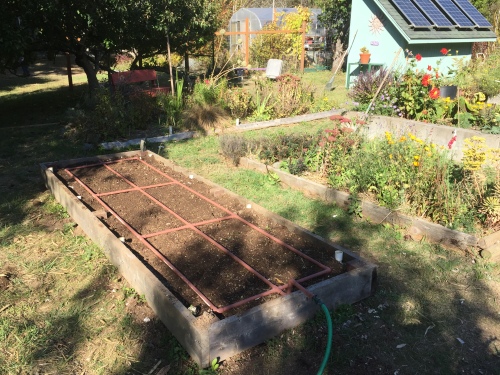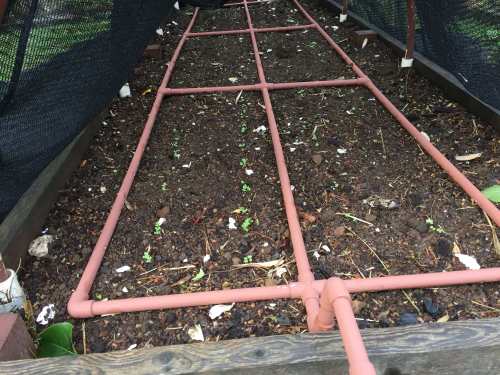…and the bees love it too.

Want to grow spinach? We have been wildly unsuccessful in growing it, but guess what…steamed turnip greens taste just like spinach. It turns out they are very easy to grow and are good for you too. This was supposed to be a mixture of several cover crop seeds, Fava beans, Winter Rye, and Hairy Vetch included. It looks like the turnips took over. Uh, I might have broadcast them a little thick. My “solar-roller water pump panel” is positioned for the afternoon sun. Gotta keep the flow going. 🙂

Turnip flowers in January provide nourishment for bees in the critical winter months.

October 8…This bed was planted August 1. Turnips grow fast. Plant them thick, then you can harvest the thinnings by steaming the greens. Leave a few to go to flowers in winter.

We’ve been getting three crops a year in our raised beds. This was lettuce last winter, then kale, now turnips. In between we bury crab shell when we can get it. This being October, that resource will soon be gone.

Oct. 10…My sweetheart made a delicious turnip soup for dinner this evening. These turnips were planted in early August. They grow fast!!!

Oct. 8…just in case we haven’t planted enough turnips, here is another bed started…complete with drip water grid.

Oct. 15…Turnips are up already. The shade cloth is to protect the little darlings from the hurricane force winds and 12-18 inches (300-450mm) of rain that was forecast…didn’t happen, at least, not yet.
Turnip soup recipe
Chop an onion, saute in olive oil, add 4 to 5 cups of peeled chopped turnips, two garlic cloves (peeled and cut in half), add two teaspoons of smoked paprika, and teaspoon of thyme leaves. Cook until lightly brown, add three cups of vegetable or chicken broth, salt to taste. Bring to boil and simmer until veggies are cooked. Blend in blender, return to pan, add a cup of milk, or milk alternative.






















































